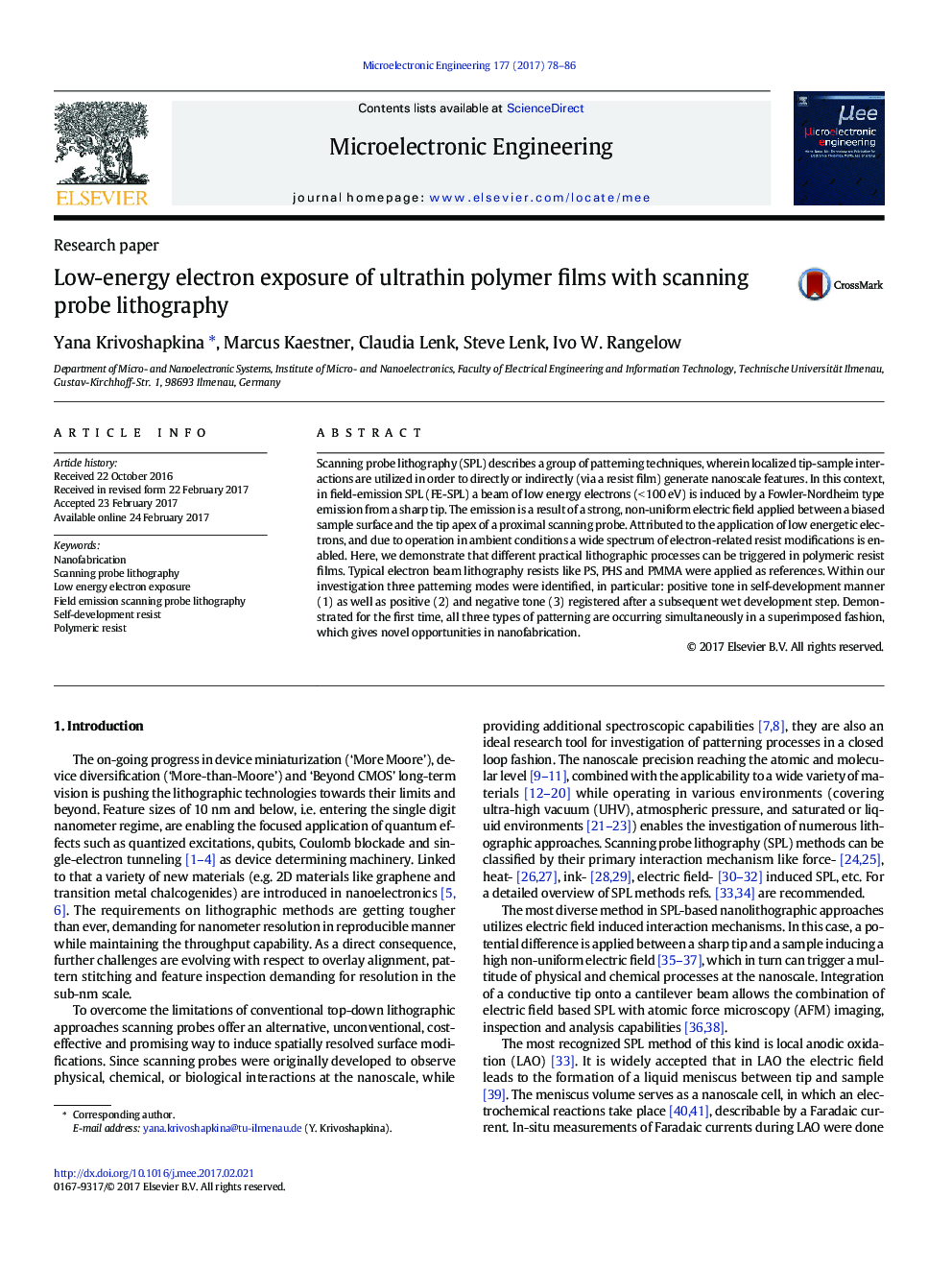| Article ID | Journal | Published Year | Pages | File Type |
|---|---|---|---|---|
| 4970955 | Microelectronic Engineering | 2017 | 9 Pages |
â¢Low-energy (35 eV) electron exposure of polymer films performedâ¢Three patterning modes demonstrated: positive and negative tones, and self-developmentâ¢Comparison of SPL and EBL exposure of polymer films done
Scanning probe lithography (SPL) describes a group of patterning techniques, wherein localized tip-sample interactions are utilized in order to directly or indirectly (via a resist film) generate nanoscale features. In this context, in field-emission SPL (FE-SPL) a beam of low energy electrons (<Â 100Â eV) is induced by a Fowler-Nordheim type emission from a sharp tip. The emission is a result of a strong, non-uniform electric field applied between a biased sample surface and the tip apex of a proximal scanning probe. Attributed to the application of low energetic electrons, and due to operation in ambient conditions a wide spectrum of electron-related resist modifications is enabled. Here, we demonstrate that different practical lithographic processes can be triggered in polymeric resist films. Typical electron beam lithography resists like PS, PHS and PMMA were applied as references. Within our investigation three patterning modes were identified, in particular: positive tone in self-development manner (1) as well as positive (2) and negative tone (3) registered after a subsequent wet development step. Demonstrated for the first time, all three types of patterning are occurring simultaneously in a superimposed fashion, which gives novel opportunities in nanofabrication.
Graphical abstractDownload high-res image (191KB)Download full-size image
